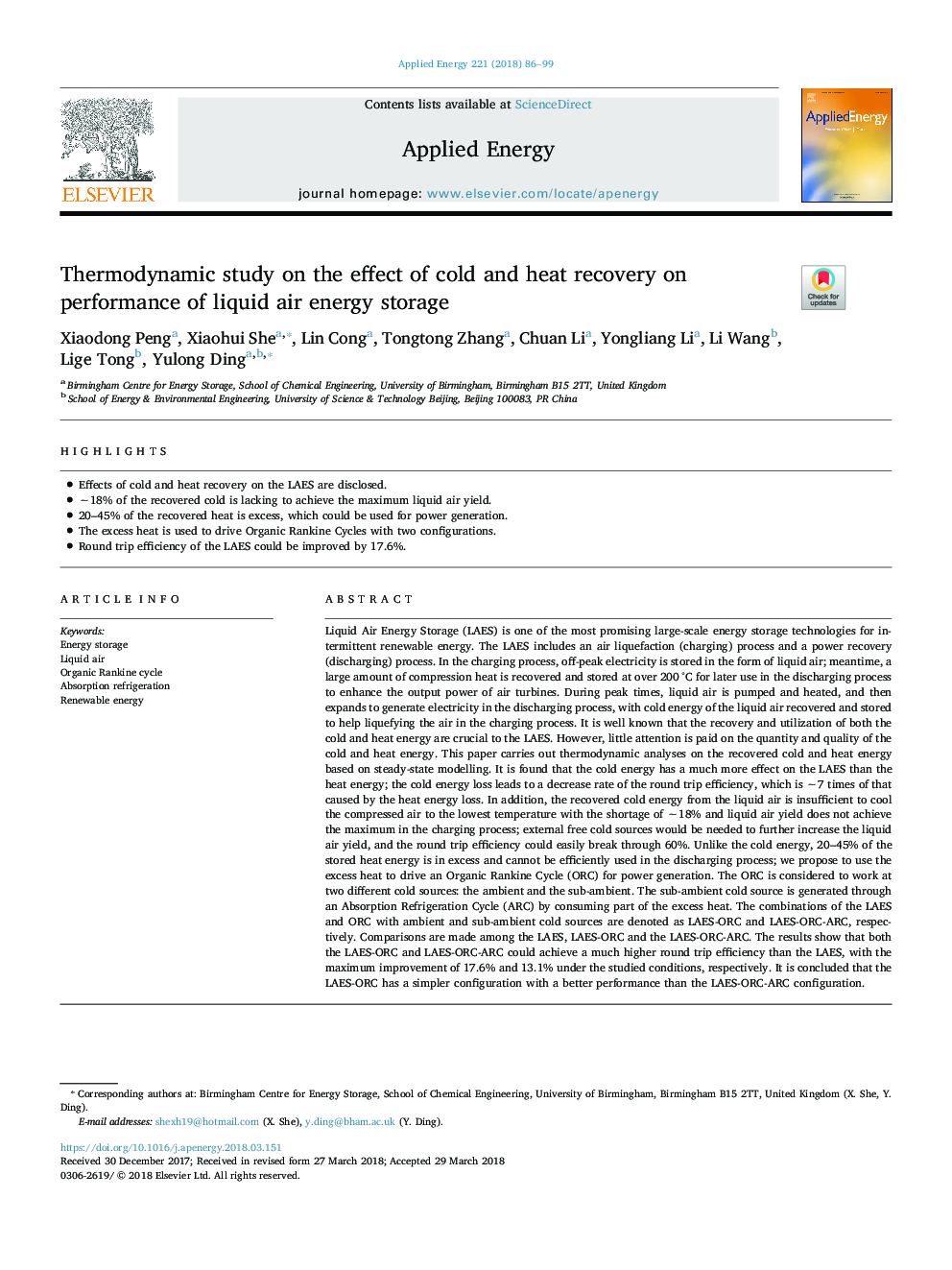| کد مقاله | کد نشریه | سال انتشار | مقاله انگلیسی | نسخه تمام متن |
|---|---|---|---|---|
| 6680174 | 1428069 | 2018 | 14 صفحه PDF | دانلود رایگان |
عنوان انگلیسی مقاله ISI
Thermodynamic study on the effect of cold and heat recovery on performance of liquid air energy storage
ترجمه فارسی عنوان
مطالعه ترمودینامیکی بر اثر بازده سرد و گرم بر عملکرد ذخیره سازی انرژی مایع هوا
دانلود مقاله + سفارش ترجمه
دانلود مقاله ISI انگلیسی
رایگان برای ایرانیان
کلمات کلیدی
ذخیره انرژی، هوا مایع چرخه رنکین ارگانیک، تجمع جذب، انرژی تجدید پذیر،
موضوعات مرتبط
مهندسی و علوم پایه
مهندسی انرژی
مهندسی انرژی و فناوری های برق
چکیده انگلیسی
Liquid Air Energy Storage (LAES) is one of the most promising large-scale energy storage technologies for intermittent renewable energy. The LAES includes an air liquefaction (charging) process and a power recovery (discharging) process. In the charging process, off-peak electricity is stored in the form of liquid air; meantime, a large amount of compression heat is recovered and stored at over 200â¯Â°C for later use in the discharging process to enhance the output power of air turbines. During peak times, liquid air is pumped and heated, and then expands to generate electricity in the discharging process, with cold energy of the liquid air recovered and stored to help liquefying the air in the charging process. It is well known that the recovery and utilization of both the cold and heat energy are crucial to the LAES. However, little attention is paid on the quantity and quality of the cold and heat energy. This paper carries out thermodynamic analyses on the recovered cold and heat energy based on steady-state modelling. It is found that the cold energy has a much more effect on the LAES than the heat energy; the cold energy loss leads to a decrease rate of the round trip efficiency, which is â¼7 times of that caused by the heat energy loss. In addition, the recovered cold energy from the liquid air is insufficient to cool the compressed air to the lowest temperature with the shortage of â¼18% and liquid air yield does not achieve the maximum in the charging process; external free cold sources would be needed to further increase the liquid air yield, and the round trip efficiency could easily break through 60%. Unlike the cold energy, 20-45% of the stored heat energy is in excess and cannot be efficiently used in the discharging process; we propose to use the excess heat to drive an Organic Rankine Cycle (ORC) for power generation. The ORC is considered to work at two different cold sources: the ambient and the sub-ambient. The sub-ambient cold source is generated through an Absorption Refrigeration Cycle (ARC) by consuming part of the excess heat. The combinations of the LAES and ORC with ambient and sub-ambient cold sources are denoted as LAES-ORC and LAES-ORC-ARC, respectively. Comparisons are made among the LAES, LAES-ORC and the LAES-ORC-ARC. The results show that both the LAES-ORC and LAES-ORC-ARC could achieve a much higher round trip efficiency than the LAES, with the maximum improvement of 17.6% and 13.1% under the studied conditions, respectively. It is concluded that the LAES-ORC has a simpler configuration with a better performance than the LAES-ORC-ARC configuration.
ناشر
Database: Elsevier - ScienceDirect (ساینس دایرکت)
Journal: Applied Energy - Volume 221, 1 July 2018, Pages 86-99
Journal: Applied Energy - Volume 221, 1 July 2018, Pages 86-99
نویسندگان
Xiaodong Peng, Xiaohui She, Lin Cong, Tongtong Zhang, Chuan Li, Yongliang Li, Li Wang, Lige Tong, Yulong Ding,
